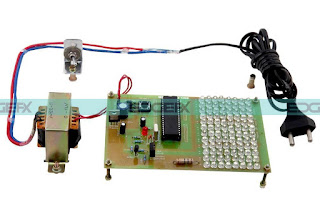AUTO INTENSITY CONTROL OF STREET
LIGHTS
ABSTRACT
White Light Emitting Diodes (LED) replaces HID lamps
in street lighting system to include dimming feature. A microcontroller of 8051
family is used to control the intensity by developing pulse width modulated
signals that drives a MOSFET to switch the LEDs according to achieve desired
operation.
In the present system, mostly the lightning up of
highways is done through High Intensity Discharge lamps (HID), whose energy
consumption is high. Its intensity cannot be controlled according to the requirement
so there is a need to switch on to an alternative method of lightning system
i.e., by using LEDs. This system is build to overcome the present day drawbacks
of HID lamps. This system demonstrates the usage of the LED’s (light emitting
diodes) as the light source and its variable intensity control, according to
the requirement. LED’s consume less power and its life time is more, as compared
to the conventional HID lamps. The more important and interesting feature is its
intensity can be controlled according to the requirement during non peak hours
which is not feasible in HID lamps.
A cluster of LEDs are used to form a street light. The
microcontroller contains programmable instructions which controls the intensity
of lights based on the PWM (Pulse width modulation) signals generated. The
intensity of lights are kept high during the peak hours, as the traffic on the
roads tend to decrease slowly in the late nights, the intensity also decreases progressively till morning. Final it
completely shuts down at morning 6, and again resumes at 6pm in the evening.
The process is repeated.
This concept in future can be enhanced by integrating
it with the solar panel, which converts the solar intensity into corresponding
voltage, and this energy is used to feed up the highway lights.
BLOCK DIAGRAM
Photos just for reference:
video for reference of working of project:
Download Project Abstract &PPT:



No comments:
Post a Comment